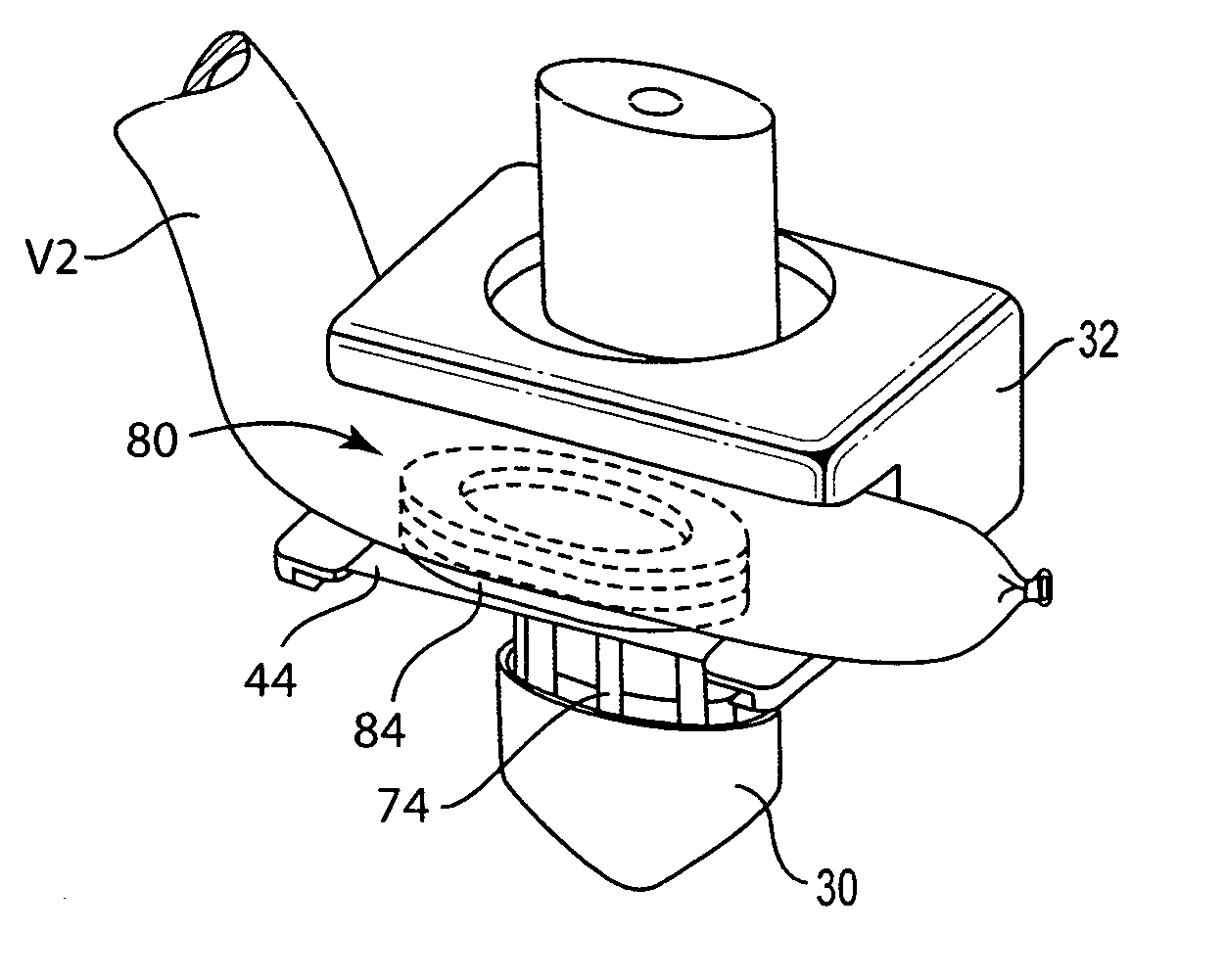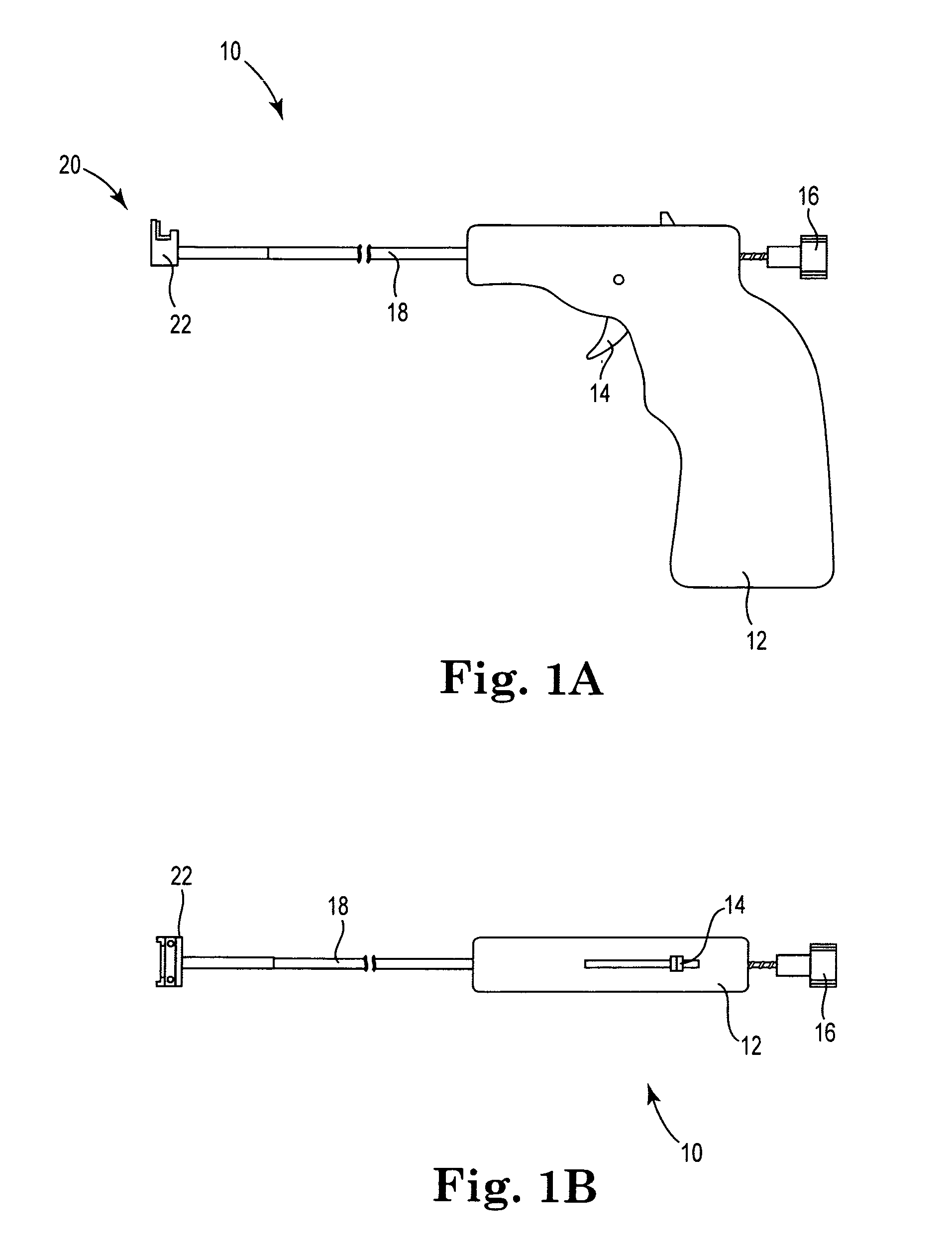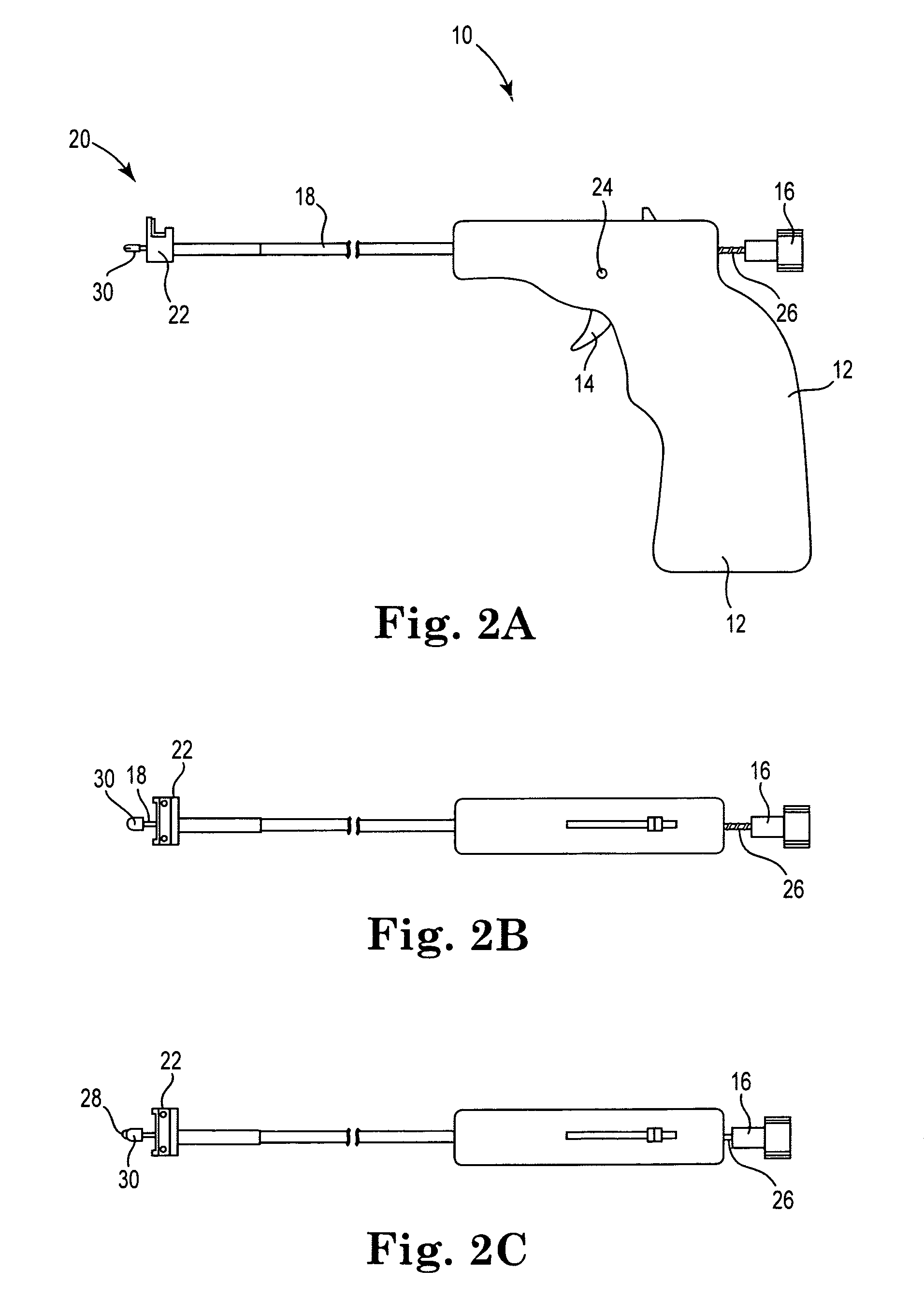Methods, devices and systems for forming magnetic anastomoses
a magnetic anastomosis and magnetic technology, applied in the field of magnetic anastomosis, can solve the problems of not being widely used or accepted, proposed couplers or connectors have failed to duplicate the success of suture, and limited success
- Summary
- Abstract
- Description
- Claims
- Application Information
AI Technical Summary
Benefits of technology
Problems solved by technology
Method used
Image
Examples
Embodiment Construction
[0035]FIG. 1 shows an anastomotic delivery device 10 having a handle 12, first and second actuators 14, 16, and a shaft 18. The distal end of the delivery device 10 is indicated by the reference numeral 20 and is constructed to deploy a first anastomotic component that is configured to be coupled to a second anastomotic component, thereby forming a magnetic anastomosis. As used herein, the term anastomosis encompasses the connection of any two (or more) hollow anatomical structures, bodies, vessels, etc.
[0036]The distal end 20 of delivery device 10 is used to secure a first anastomotic component to a first vessel while supporting a second anastomotic component secured to a second vessel (the components and vessels not being shown in FIGS. 1A and 1B and 2A-2C). In the illustrated embodiment the distal end 20 includes a cradle 22, which is described in detail below with reference to FIGS. 3 and 4A-4C. The cradle 22 receives the second anastomotic component and a portion of the vessel ...
PUM
| Property | Measurement | Unit |
|---|---|---|
| magnetic force | aaaaa | aaaaa |
| magnetism | aaaaa | aaaaa |
| ferromagnetic | aaaaa | aaaaa |
Abstract
Description
Claims
Application Information
 Login to View More
Login to View More - Generate Ideas
- Intellectual Property
- Life Sciences
- Materials
- Tech Scout
- Unparalleled Data Quality
- Higher Quality Content
- 60% Fewer Hallucinations
Browse by: Latest US Patents, China's latest patents, Technical Efficacy Thesaurus, Application Domain, Technology Topic, Popular Technical Reports.
© 2025 PatSnap. All rights reserved.Legal|Privacy policy|Modern Slavery Act Transparency Statement|Sitemap|About US| Contact US: help@patsnap.com



